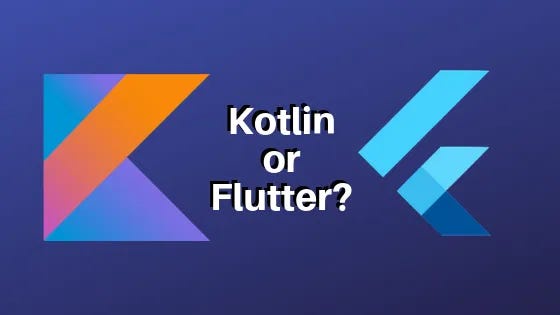Mobile apps thrive on visually captivating user interfaces (UI). Two rising stars, Kotlin and Flutter, empower UI artistry. Kotlin, compatible with Java, reigns as Android developers' darling. Flutter, Google's UI toolkit, enables stunning, natively compiled apps across mobile, web, and desktop from one codebase.
Here, we'll explore UI design's artistry through Kotlin and Flutter's design patterns. We'll cover their UI design basics, how patterns enrich UI development, implementing common UI patterns in Kotlin, leveraging Flutter widgets for striking interfaces. Real-world artistic UI examples using Kotlin and Flutter showcase their combined power for elevated UI artistry.
Grasping Kotlin and Flutter's UI Design Foundations
Appreciating Kotlin and Flutter's UI synergy requires understanding their core principles. Kotlin is statically typed, safely integrating with Java and prioritizing clarity, tooling. Its conciseness reduces bugs. Java interoperability simplifies transition for Java developers, making Kotlin ideal for Android's responsive, intuitive UIs.
Flutter is Google's comprehensive UI toolkit creating visually captivating, natively compiled apps across platforms from one codebase using Dart. Its reactive framework and widget-centric approach streamline building complex UIs by composing, customizing widgets for desired looks.
Together, Kotlin's robustness meets Flutter's flexibility - a UI powerhouse. While Kotlin excels at native Android apps, Flutter extends cross-platform, enabling cohesive, unified design adaptable to any screen. Grasping these foundations unlocks implementing patterns, leveraging both to craft exceptional UIs.
The Role of Design Patterns in UI Development
Design patterns are like blueprints that solve UI design problems systematically and efficiently. They provide standard solutions adaptable to different scenarios, boosting code reusability and scalability. For UI development, patterns guide component organization, navigation flow, and user interaction, ensuring consistent experiences across applications. Using patterns, developers avoid reinventing common UI task solutions, leading to efficient development and easier maintenance. Plus, patterns facilitate developer communication with a shared solution language, making collaboration on complex UI projects smoother. Understanding and applying design patterns is crucial for crafting effective, engaging user interfaces in the rapidly changing mobile app landscape.
Good To Read:- Kotlin Vs Flutter: What to Choose – When and Why?
Implementing Common UI Patterns with Kotlin
Kotlin's pragmatic app development approach makes it great for implementing common UI patterns in Android applications. The Model-View-ViewModel (MVVM) pattern separates concerns cleanly. In Kotlin, data binding effortlessly links UI components to data sources, streamlining development and reducing boilerplate code. The Singleton pattern manages a single class instance throughout the application lifecycle. Kotlin's object declaration simplifies Singleton implementation, ensuring efficient, thread-safe shared resource usage. Additionally, Kotlin supports the Repository pattern through concise syntax and powerful features like coroutines for asynchronous data flow management, making it easier to handle data operations and dynamically update UI components efficiently. By harnessing these patterns, Kotlin developers create responsive, maintainable, scalable Android applications with sophisticated UI designs, enhancing the overall user experience.
Discovering Flutter Widgets for UI Creation
Flutter revolves around widgets – pre-made components crafting user interfaces. Its library has many widgets for customization and unique combinations. From text/buttons to navigation menus and animated containers, widgets cover a range of UI parts. For Android and iOS looks, Material and Cupertino libraries provide platform-specific widgets. Flutter also offers layout widgets like Rows, Columns, and Stacks for responsive designs across devices. However, Flutter's true power lies in custom widget creation. By transforming basic widgets with animations, gestures, and other effects, developers build distinct user experiences. This flexibility encourages UI design creativity and experimentation. Ultimately, Flutter empowers artistic UIs with intuitive interactions – only limited by one's imagination.
Must Read:- Top Mobile App Development Companies in India in 2024
Combining Kotlin and Flutter for Exceptional UIs
Uniting Kotlin's backend strengths with Flutter's frontend versatility enables intricate, visually appealing UIs. By managing core logic and data in Kotlin while utilizing Flutter for UI, developers gain both worlds' advantages. Flutter's platform channels enable seamless Dart-Kotlin communication on Android. This integration allows implementing complex features/animations challenging with single technologies. For example, a Kotlin background service can feed data to Flutter widgets, ensuring beautiful yet highly functional UIs. Leveraging Kotlin's efficiency and Flutter's UI toolkit optimizes performance besides elevating UI artistry. Combining Kotlin and Flutter exemplifies how merging technologies can inspire innovative solutions, pushing mobile app UI design boundaries.
Outstanding Mobile UIs with Kotlin and Flutter
The realms of app development showcase standout examples blending UI artistry via Kotlin and Flutter. Reflectly, an AI journal app, employs Flutter's dynamic UI capabilities for a soothing user experience. Seamlessly merging fluid animations, transitions with Kotlin's data handling prowess for AI responses. Another prime example is Hamilton's Broadway musical app, leveraging Flutter's cross-platform elements delivering rich, native-like UX on Android and iOS. Kotlin securely manages user data like ticket purchases, orders efficiently. These apps highlight aesthetic possibilities combining Kotlin and Flutter, resulting in intuitive, responsive UI elevating overall user experiences.
Unleash the art of UI design with Best Kotlin App Development Services in India. Master the implementation of patterns with Kotlin and Flutter for a stunning user interface. Let's craft a visual masterpiece for your app together.
Wrap up
In summary, integrating Kotlin and Flutter in mobile UI design showcases visually striking interfaces. Emphasizing leveraging different tech strengths enhances functionality and UX. Kotlin provides robust back-end logic, data management foundation. Flutter offers flexible, expressive front-end toolkit crafting. This synergy enables building not just aesthetically beautiful but robust, responsive cross-platform apps. Implementing patterns, utilizing vast widget/feature arrays in Kotlin/Flutter pushes UI design boundaries. Real-world examples demonstrate achievable artistry, innovation combining these powerful tools. As mobile app development evolves, embracing collaborative UI approaches will lead to engaging, intuitive, visually appealing future apps.


No comments yet